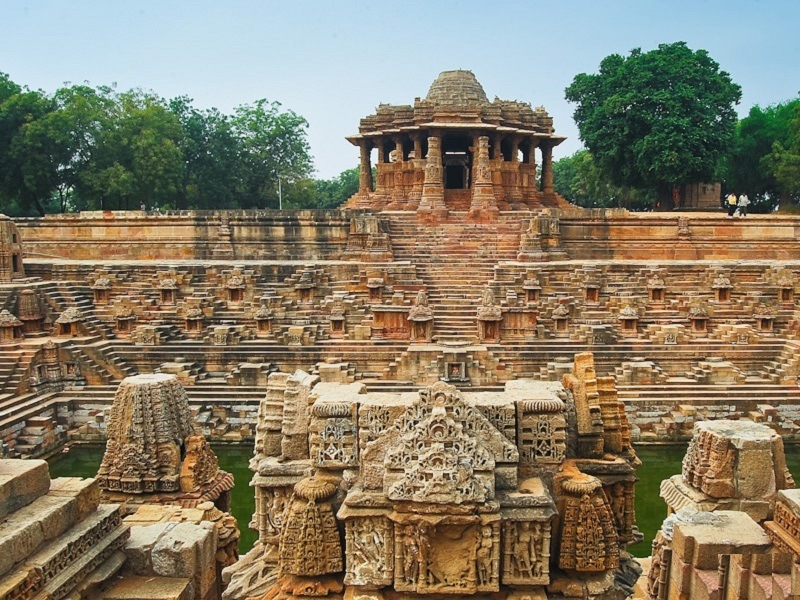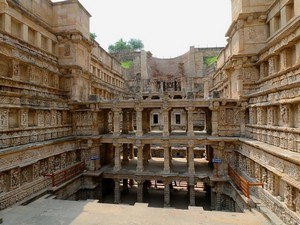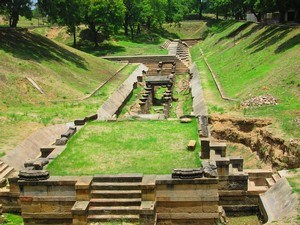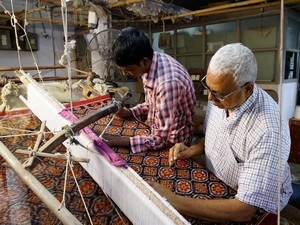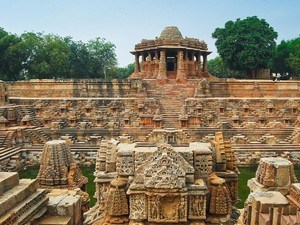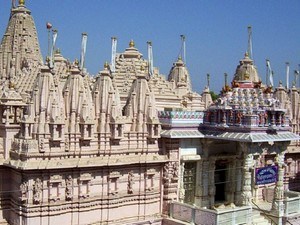Modhera Sun Temple, Patan - Timings, History, Architecture, Best Time to Visit
Photo Credit: Flickr
 #5 of 11 Places to Visit in Patan
#5 of 11 Places to Visit in Patan
 Distance (From Patan): 35 Kms
Distance (From Patan): 35 Kms
 Trip Duration (Including Travel): 2-3 Hours
Trip Duration (Including Travel): 2-3 Hours
 Place Location: At Modhera Village
Place Location: At Modhera Village
 Transportation Options: Bus / Cab
Transportation Options: Bus / Cab
 Travel Tips: None
Travel Tips: None
About Modhera Sun Temple
At a distance of 28 Km from Mehsana, 35 Km from Patan and 100 Km from Ahmedabad, Modhera Sun Temple is an ancient Hindu temple located at Modhera village near Patan in Gujarat. Situated on the banks of River Pushpavati, the temple is dedicated to the Sun God. It is one of the popular places of heritage in India, and among the must include places in the Patan tour packages. At present, the Sun Temple in Gujarat is a protected monument of national and global interest, and it is no longer an active place of worship. The temple is maintained by the Archaeological Survey of India.
History of Modhera Sun Temple
The Sun Temple in Modhera was built by King Bhimdev I of the Solanki dynasty in 1026 AD, and is one of the prominent heritage sites near Ahmedabad. The temple was plundered by Mahmud Ghazni; however, upon Bhima's return to power after successfully thwarting Ghazni's invasion, he commissioned the temple's reconstruction. Subsequently, the miniature and niche shrines within the tank of the Modhera Sun Temple were established shortly after 1026 CE. The dancing hall, gateways, and porch of the temple were constructed later, specifically during the third quarter of the 12th century under the reign of Karna. Currently, no worship is conducted at this site. The temple is recognized as a Monument of National Importance and is preserved by the Archaeological Survey of India. In December 2022, it was included in the tentative list of the UNESCO World Heritage Committee.
Architecture of Modhera Sun Temple
Built-in Maha-Gurjara style, the temple complex is divided into three parts - the main temple with a Garbhagriha and Gudhamandapa, a detached Sabhamandapa, and Surya Kunda. Also known as Rama Kund, Surya Kund is a rectangular stepped tank that is used to store water and perform ceremonies for worshiping the Sun God. An interesting aspect of the kund is that it is marked by 108 miniature shrines at different levels, which can be accessed by staircases found all around the tank. Besides these, there are four larger shrines dedicated to Lord Vishnu, Lord Ganesh, Natraja, and Sitala Mata around the tank.
Beyond the tank are remnants of an ornamented pillared gateway known as the Kirti Torana, which leads to the next structure known as Ranga Mandap or Sabhamandapa. It is a magnificent pillared hall meant for religious gatherings and conferences. It has 52 pillars representing the 52 weeks in a year. Each of these pillars is intricately carved, with every inch of available space depicting scenes from the Hindu epics Ramayana and Mahabharata. The exterior of this open-pillared hall is covered with sculptures and panels depicting deities, social scenes, flora and fauna, and geometric motifs.
The Sabhamandap leads to the main shrine of Surya known as the Gudhamandapa, which is further divided into three parts namely the assembly hall, the vestibule, and the sanctum sanctorum. The Gudhamandapa has friezes of the Sun God, other gods, and goddesses on its walls. It is said that the sanctum sanctorum once used to bear the golden idol of Lord Surya. However, the idol was plundered by Mahmud Ghazni yet the walls represent the Sun God in his 12 different facets of each month. As in the Sun Temple at Konark, this temple was also designed that the first rays of the Sun fall on the image of Lord Surya at the time of equinoxes. The carved walls also depict the aspects of human life like the vicious circle of birth and death. Adjacent to the temple complex lies an Archaeology Museum that showcases intricate stone carvings, including those crafted on monolithic stones.
In 2022, the Prime Minister Shri Narendra Modi inaugurated a solar-powered 3D light and sound show at the temple, which operates entirely on solar energy and lasts approximately 18 to 20 minutes. This engaging presentation is scheduled from 7 PM to 7:30 PM, providing a distinctive opportunity to explore the rich history and heritage of the Sun Temple as well as various other Sun temples throughout India.
Festivals of Modhera Sun Temple
The primary festival associated with the Modhera Sun Temple in Patan is the Modhera Dance Festival, also known as the Uttarardh Mahotsav or Modhera Utsav. This three-day annual festival is held in the third week of January every year, often coinciding with the Uttarayan (Makar Sankranti) festival. Organized by the Tourism Corporation of Gujarat, it celebrates the architectural grandeur and rich cultural heritage of the region. Classical dancers from all corners of the country visit the place to perform and that attracts tourists and dance connoisseurs in large numbers.
Modhera Sun Temple Dress Code & Other Restrictions
Although the Modhera Sun Temple near Patan does not enforce a strict dress code, it is advisable to wear modest attire that covers the upper arms and legs as a mark of respect. Men are suggested to don a dhoti or pajama with an upper garment, or alternatively, formal trousers and shirts. Women may choose to wear a saree, half saree, or chudidhars. It is recommended to avoid modern clothing such as mini-skirts, shorts, and sleeveless tops while visiting the temple.
Non-Hindus are generally permitted to visit the Modhera Sun Temple in Patan. The temple is open to all visitors, and there are no restrictions based on religion.
Modhera Sun Temple Timings
Monday: 7 AM - 6 PM
Tuesday: 7 AM - 6 PM
Wednesday: 7 AM - 6 PM
Thursday: 7 AM - 6 PM
Friday: 7 AM - 6 PM
Saturday: 7 AM - 6 PM
Sunday: 7 AM - 6 PM
Modhera Sun Temple Entry Fee
Entry is available for Rs. 40 for Indians, Rs. 200 for Foreigners & Rs. 300 for Guide
Best Time to Visit Modhera Sun Temple
The optimal period for visiting the Modhera Sun Temple is from October to March, with the highest influx of visitors occurring between November and February. The winter season offers the most pleasant weather, characterized by average temperatures that are ideal for exploring the temple. Additionally, the renowned Modhera Dance Festival is held in January, coinciding with the widely celebrated Gujarati festival of 'Uttarayan,' and lasts for three days. This event, organized by the Tourism Corporation of Gujarat, showcases the region's architectural splendor and rich cultural heritage. Classical dancers from across the nation gather to perform, drawing significant numbers of tourists and dance enthusiasts. It is recommended to avoid the summer months due to extreme heat and high temperatures, as well as the monsoon season, which often brings heavy rainfall.
How to Reach Modhera Sun Temple
Sardar Vallabhbhai Patel Airport, Ahmedabad is the nearest airport which is about 122 Km from Patan. It has flights from New Delhi, Mumbai, Bangalore, Hyderabad, Jaipur, Pune, Chennai, Kolkata, Cochin, and Lucknow. Patan Railway Station has well-connected trains from Ahmedabad, Mumbai, Jodhpur, and Mehsana Junction. Ahmedabad Railway Station is the major railhead which has well-connected trains from all the major cities of India. Patan Bus terminal is the nearest bus station which is well-connected with all the major cities of Gujarat including Ahmedabad, Mehsana, Vadodara, Bhuj, Rajkot, Junagadh, Mumbai, Udaipur, and Surat. Travelers can reach Modhera Sun Temple by taking a bus or hiring cab from Patan as well as from Ahmedabad.



